In recent years, Formula 1 has experienced an unprecedented surge in popularity, fueled by blockbuster seasons, captivating storylines, and a growing digital presence. As viewership skyrockets and fan engagement deepens, the sport has become a magnet for sponsors eager to associate their brands with the glamour, speed, and global reach of F1. However, this rising demand has led to an F1 sponsorship race and a critical question: Are F1 teams running out of inventory and sponsorship assets to offer?
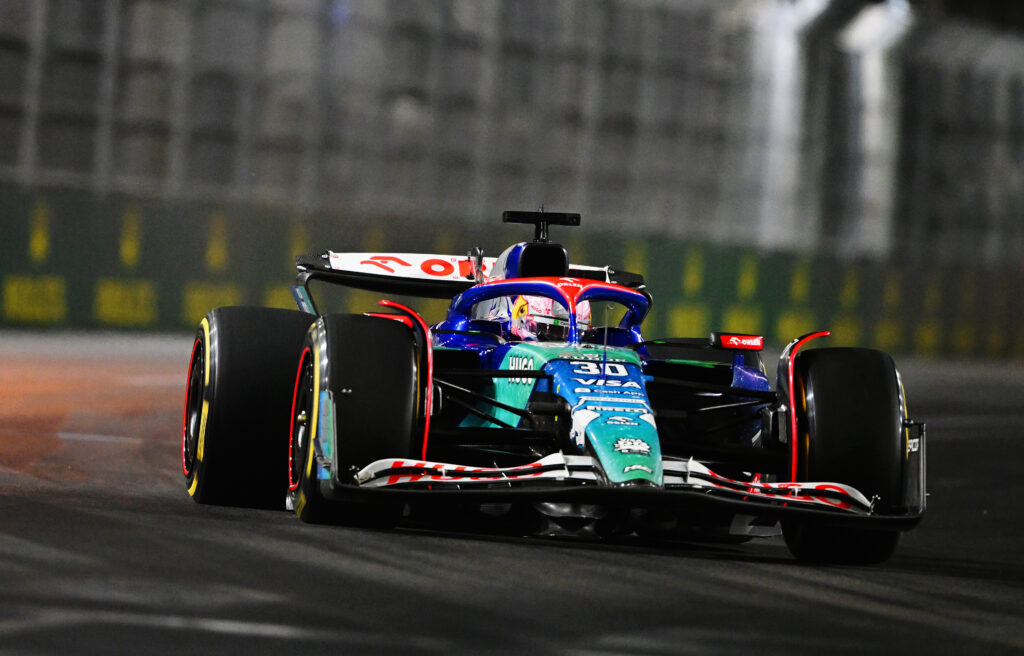
© Getty Images / Red Bull Content Pool
Several factors have converged to create a situation where sponsorship opportunities in F1 are becoming increasingly scarce:
Boom in Popularity: Formula 1’s global audience has grown significantly, particularly in key markets like the United States, where the sport’s popularity has surged thanks to Netflix’s "Drive to Survive" series and high-profile events like the Miami and Las Vegas Grands Prix. This boom has attracted a wave of new sponsors, from traditional automotive and technology companies to lifestyle and consumer brands.
Fixed Asset Space: The physical space available on an F1 car, driver suits, and team apparel is inherently limited. Teams are bound by aerodynamic design and regulations, which constrain the number of logos that can be placed on a car without compromising performance or aesthetics.
Long-Term Partnerships: Many teams have secured multi-year deals with sponsors, locking up prime real estate on cars and apparel for extended periods. This limits the availability of top-tier assets for new entrants.
Increased Competition Among Sponsors: With only 10 teams on the grid and a limited number of visible assets, the competition to secure sponsorship deals has intensified. This scarcity has driven up costs and created a more exclusive marketplace.
Diversification of Revenue Streams: Teams are increasingly diversifying their sponsorship portfolios by offering digital, experiential, and hospitality assets. While this expands the range of opportunities, it also means the most sought-after physical assets become even more valuable and quickly allocated.
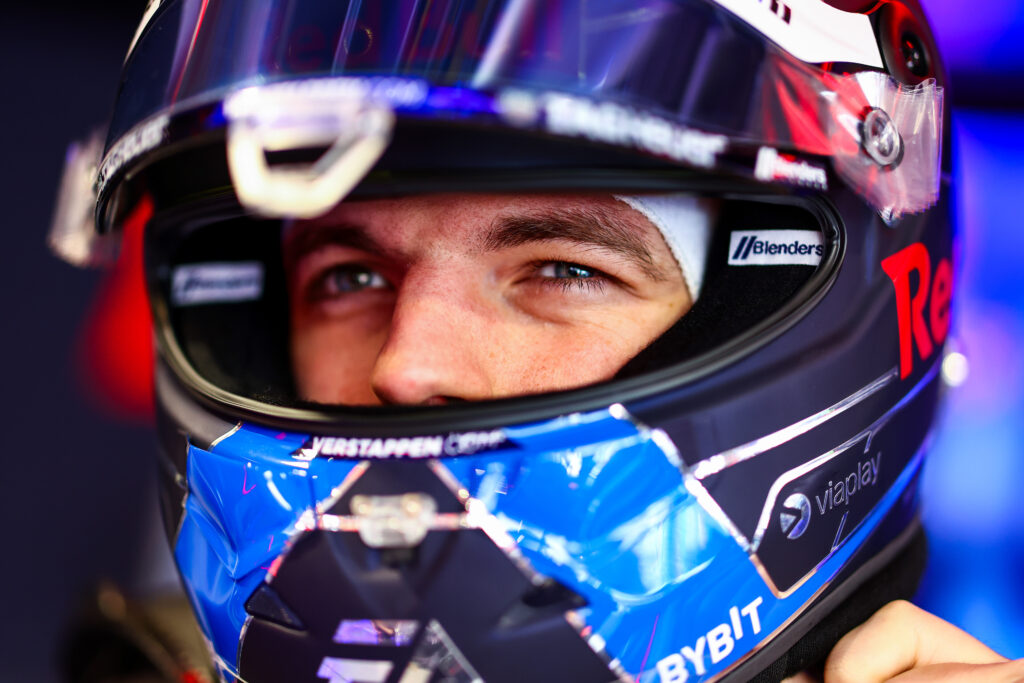
© Getty Images / Red Bull Content Pool
For sponsors looking to enter the F1 ecosystem or expand their involvement, the challenge of limited inventory requires strategic navigation. Here are some approaches to consider:
Think Beyond the Car: While car branding is iconic, sponsors should explore other high-impact opportunities. Team apparel, driver helmets, pit lane equipment, and even digital assets such as social media campaigns and virtual experiences can offer significant visibility.
Leverage Digital and Content Marketing: F1’s digital ecosystem is vast and growing. Sponsors can partner with teams to create bespoke content, behind-the-scenes stories, or fan activations that generate engagement and build brand affinity.
Focus on Hospitality and Experiential Marketing: The F1 paddock is one of the most exclusive networking spaces in the world. Sponsors can capitalize on hospitality packages to host key clients, partners, or employees while creating unforgettable experiences aligned with their brand.
Target Emerging Teams: Established teams often have limited availability and high costs for sponsorship. Sponsors can consider partnering with emerging teams that may offer more flexibility and a chance to grow alongside them.
Multi-Team or Championship-Level Deals: Instead of focusing on a single team, brands can explore partnerships with multiple teams or even the Formula 1 organization itself. This approach can provide a broader reach and diversify risks.
Embrace Innovation: F1 teams are pushing the boundaries of sponsorship by offering creative assets like augmented reality (AR) experiences, metaverse integrations, and sustainability-focused initiatives. Brands that align with these innovations can carve out unique opportunities.

© Zak Mauger/Sauber Group
While the scarcity of sponsorship assets presents a challenge, it also reflects the growing value and prestige of partnering with F1 teams. Sponsors willing to think creatively, act strategically, and embrace innovation will find ways to navigate this evolving landscape. By leveraging untapped opportunities and building meaningful partnerships, they can still achieve exceptional returns in one of the most dynamic sports ecosystems in the world.
Formula 1 is leading the charge in empowering inclusion in motorsport, showcasing a commitment to diversity and equity that resonates worldwide. With initiatives like We Race As One, The Hamilton Commission, and F1 Academy, Formula 1, alongside its partners, is championing a more inclusive and representative culture within the sport. These efforts are about more than just racing—they aim to create a motorsport environment that opens doors to diverse talents and inspires audiences who value meaningful progress and social impact.
We Race As One: Driving Collective Change
In 2020, Formula 1 launched the We Race As One campaign, which aims to unite the sport around inclusivity. The initiative uses visible messaging, anti-racism displays, and consistent investments to promote diversity within the sport. It also encourages sponsors to amplify this message, helping brands connect with modern audiences who value social progress.
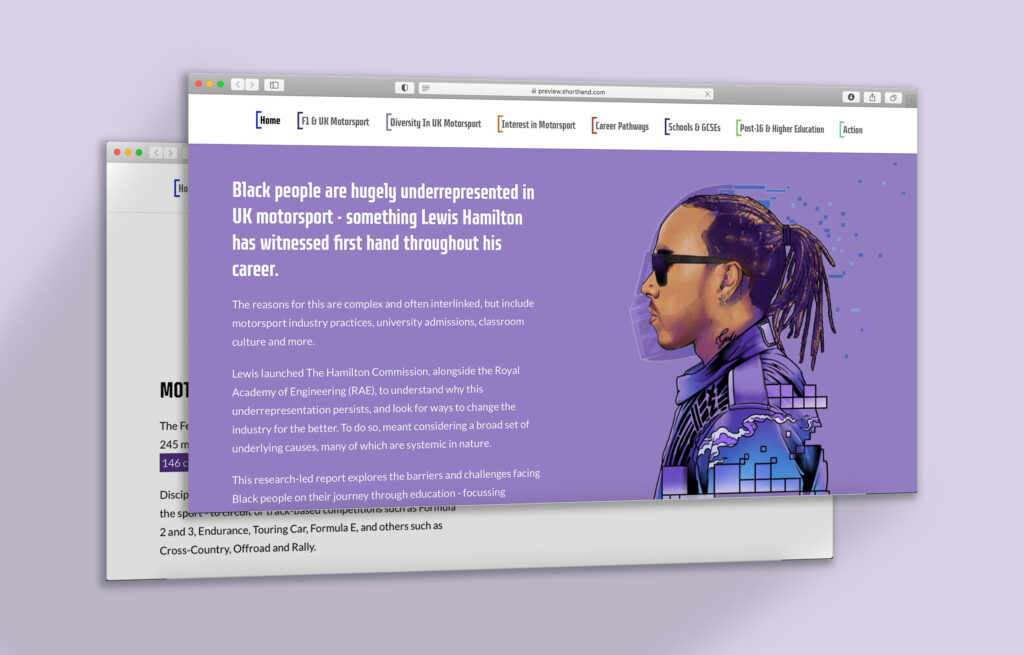
© Project Forty Four Limited
The Hamilton Commission: Opening Doors for Black Professionals
Seven-time world champion Lewis Hamilton established The Hamilton Commission to examine the underrepresentation of Black professionals in motorsport, especially in technical roles. The Commission’s recommendations focus on increasing access to STEM careers and creating pathways for Black talent within motorsport. By funding scholarships, sponsoring educational programs, and offering internships, brands and partners can support a more diverse pipeline of talent and align with the sport’s goals for inclusivity.
F1 Academy: Supporting the Next Generation of Female Racers
In 2023, Formula 1 launched F1 Academy to provide young women with opportunities to develop in motorsport, supporting gender equality in racing and fostering a more balanced field. Sponsors who back this initiative align their brand with gender equality and social progress, connecting with a modern audience that values women’s representation in sports.
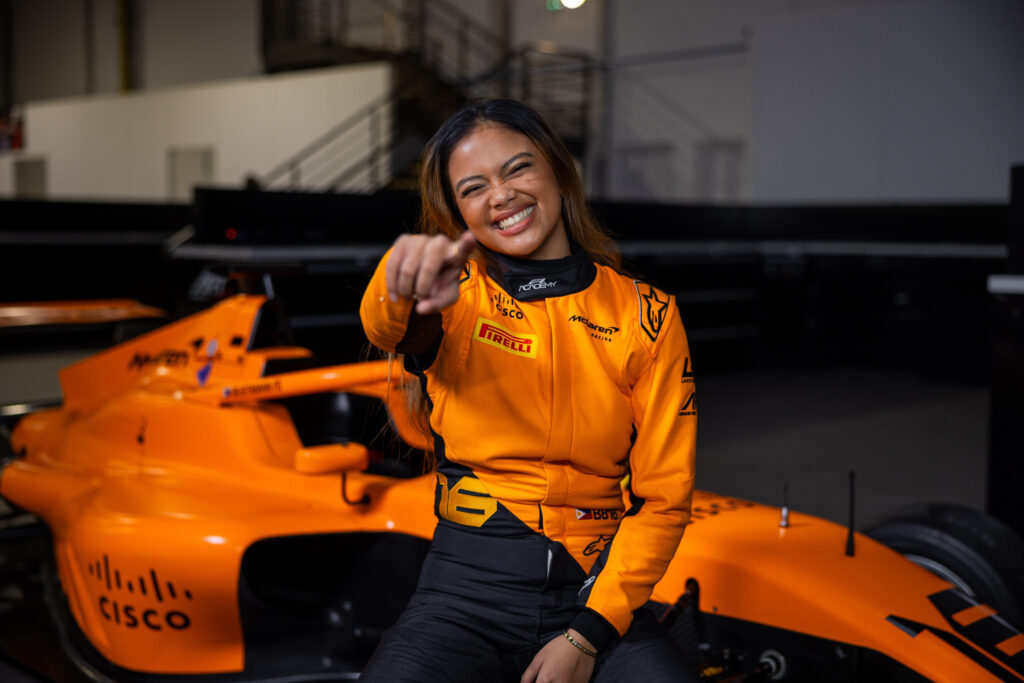
© McLaren Racing
STEM Partnerships: Investing in Future Talent
Through collaborations with STEM-focused programs like F1 in Schools, Formula 1 aims to inspire young people from underrepresented backgrounds to consider careers in engineering and racing. These programs not only fuel early interest but also offer students hands-on experience with engineering concepts by designing and racing small-scale F1 cars. Brands that fund scholarships or offer internships through these partnerships help support underrepresented talent and engage with fans who value educational opportunities and real-world impact.
Partnering with Inclusive Teams and Leaders
Many F1 teams and sponsors are setting their own inclusivity goals. For example, Mercedes-AMG Petronas is working toward a more diverse engineering workforce, while Aston Martin F1 has prioritized diversity across its organization. Sponsors partnering with these teams are showcasing their commitment to social values, enhancing brand appeal, and supporting long-term inclusivity in motorsport.
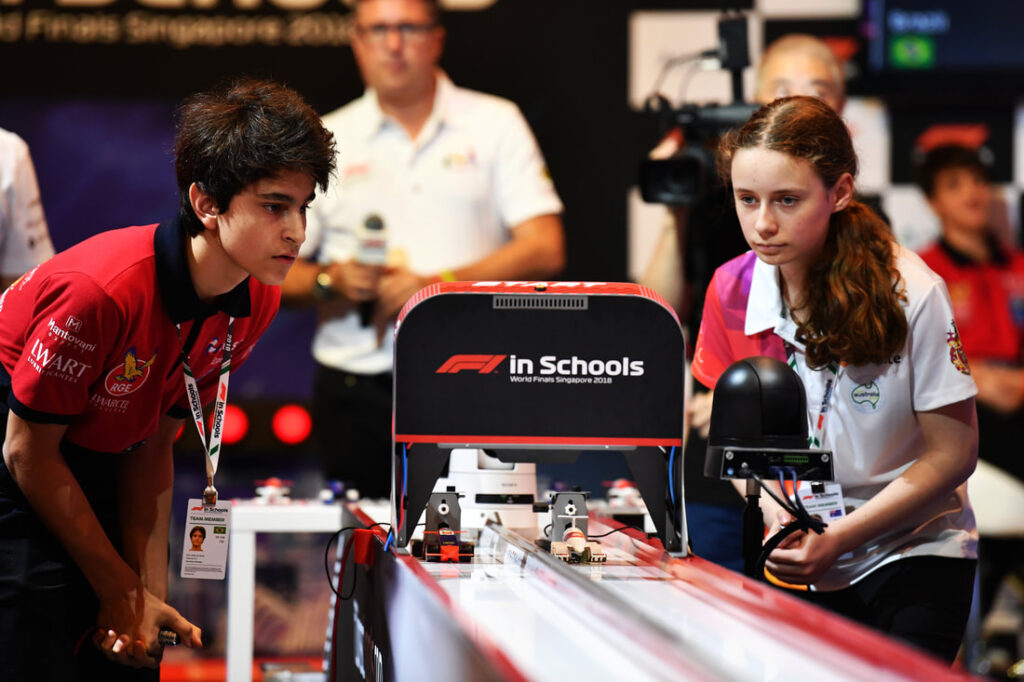
© F1
Creating Lasting Impact
The variety of initiatives across Formula 1 reflects a cohesive effort to set a new standard in motorsport. Today, diversity is more than a secondary goal; it’s a core part of Formula 1’s evolution. Supporting these initiatives allows brands to resonate with audiences who increasingly expect meaningful action on social issues. For sponsors in Formula 1, championing diversity initiatives helps foster fan loyalty, strengthen brand affinity, and build a sport that is more inclusive and accessible on a global scale.
In motorsport, especially in the world’s premier categories, many believe that sponsoring a winning team is the key to maximizing returns. While team performance does play a role—boosting visibility and associating the sponsor with success—it’s just one factor, and often not the most important one. But the question remains: does performance drive sponsorship?
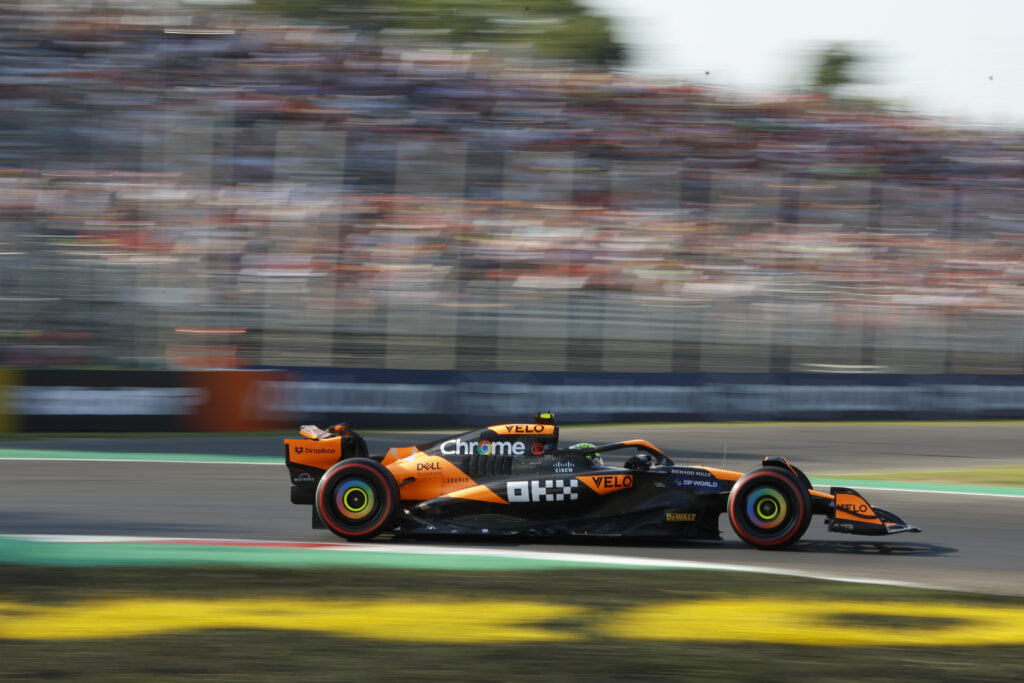
© McLaren Racing
Top teams attract large audiences and extensive media coverage, offering global exposure to their partners. However, these teams also tend to have many sponsors, which can result in limited branding space, reduced access to key assets, and less flexibility when tailoring sponsorship packages. A sponsor’s visibility can get diluted among the many partners, making it difficult to stand out or activate unique opportunities.
On the other hand, a successful sponsorship is built on more than just race wins. It’s about aligning with a team that shares your brand values and resonates with your target audience. Brand storytelling, emotional engagement, and strategic activations can deliver stronger results than simple name placement on a winning car. A well-executed sponsorship should provide value across various touchpoints, including hospitality, content creation, and exclusive experiences, which go beyond what happens on the track.
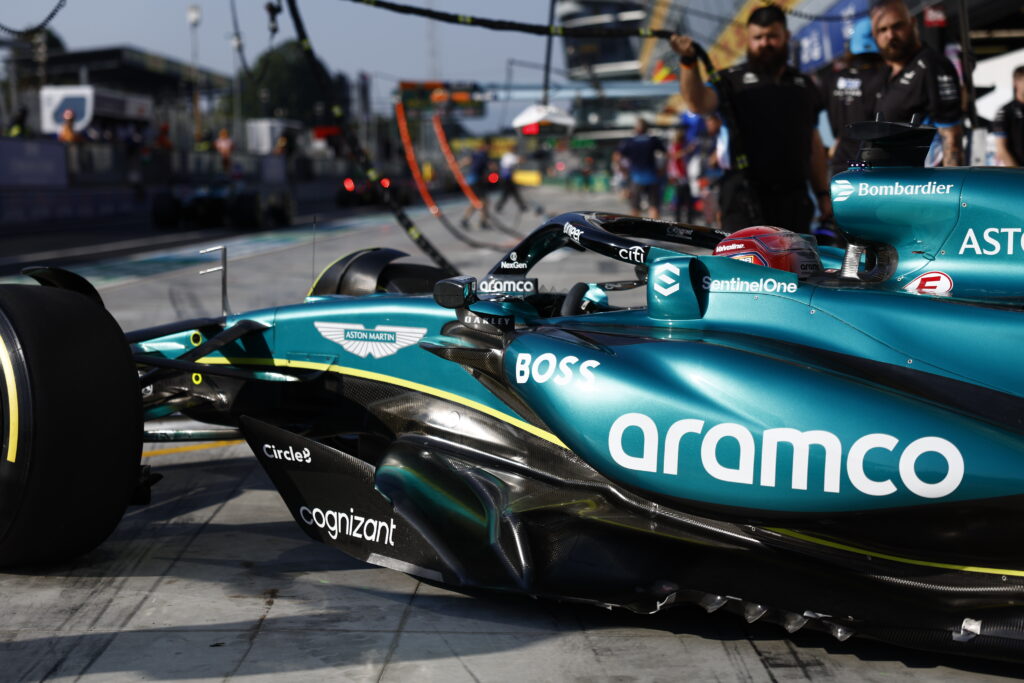
© Aston Martin F1
In fact, mid-tier teams, while not always winning, often provide more flexibility, better access to assets, and opportunities for unique collaborations. These teams value their partners deeply, which can translate into more customized sponsorship experiences, offering sponsors a bigger share of attention and engagement.
In conclusion, while team performance helps, the real success of a sports sponsorship comes from strategic brand alignment, meaningful activations, and a partnership that goes beyond just on-track results. For many brands, the right team is not necessarily the one that finishes first but the one that offers the best platform for impactful storytelling and engagement.
This is original editorial content from Drive Sports Marketing, an agency specialising in Formula 1 sponsorship, Formula E sponsorship, MotoGP sponsorship, and WEC sponsorship.
It is not a mystery that young drivers often focus only on honing their skills behind the wheel. However, mastering the art of professional communication is just as critical for their success. How young drivers communicate—both on and off the track—can significantly impact their careers, shaping their public image, influencing team dynamics, and opening doors to future opportunities. Here’s why communication matters for young drivers.
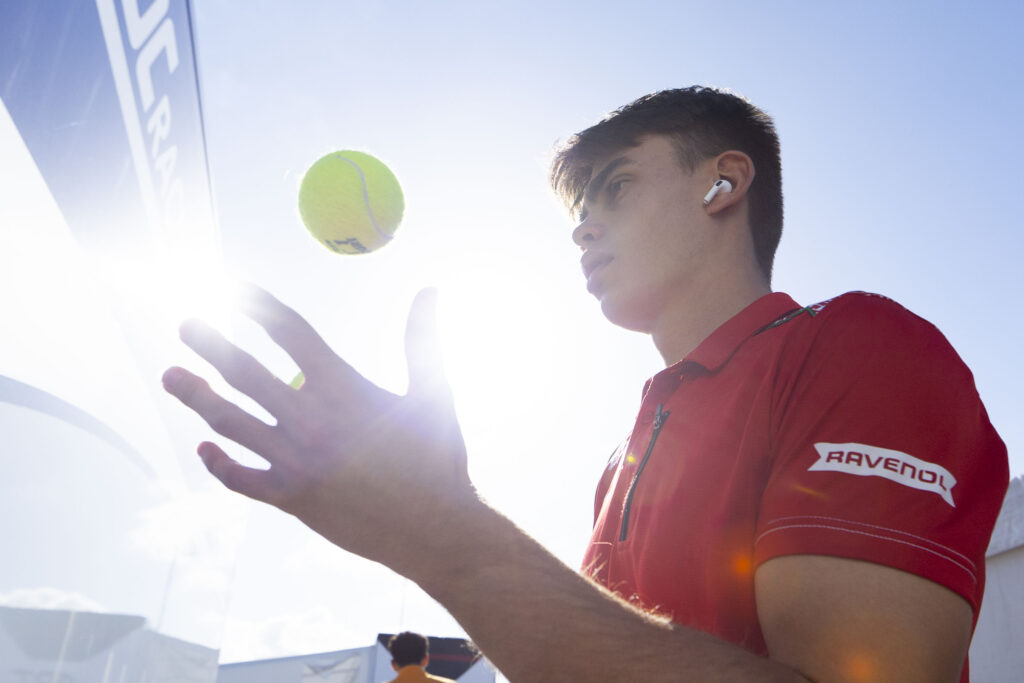
© Prema
Digital Presence: A professional digital presence is essential for building and maintaining a driver’s public image. A well-managed website acts as a central hub for showcasing achievements, sharing updates, and telling a driver’s story. Paired with active social media management, it allows drivers to engage with fans and sponsors directly. By investing in their digital presence, young drivers can control their narrative, ensuring they present themselves as polished and professional, which is crucial in attracting sponsors and opportunities.
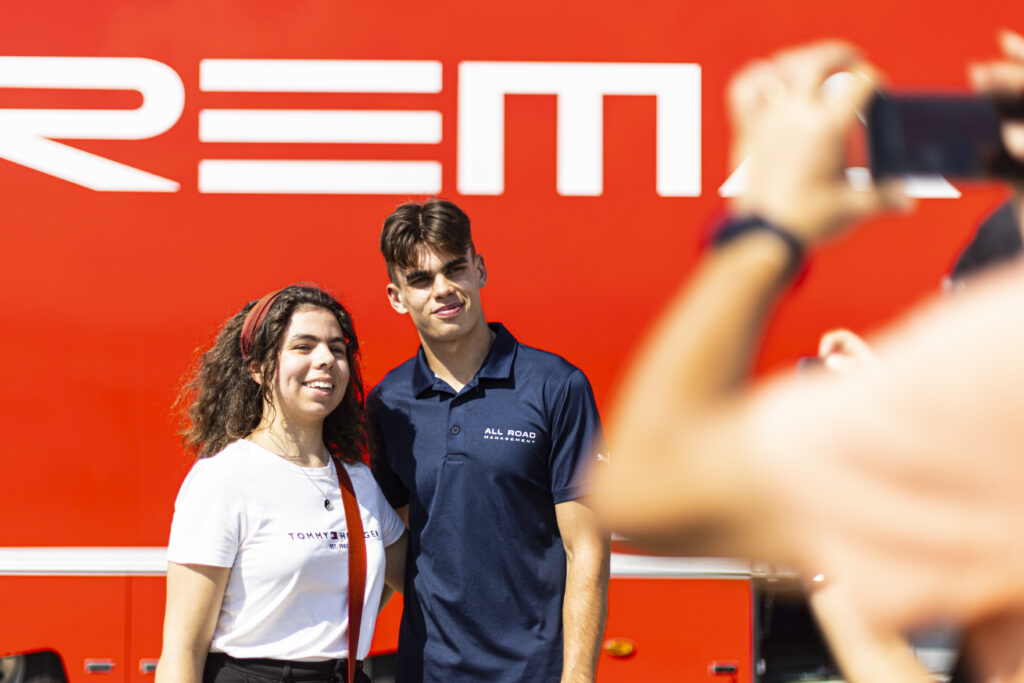
© Prema
Media Relations: Effective media relations are key to maintaining a positive public image and staying relevant in the motorsport world. Regular press releases and interviews keep drivers in the public eye, but more importantly, how they handle these interactions can make or break their reputation. By communicating clearly and confidently, young drivers can ensure they’re remembered for their professionalism and poise, which enhances their appeal to top teams and sponsors.
Fan Engagement: Engaging with fans is more than just a way to build a following—it’s about creating a loyal community that supports a driver throughout their career. Regular updates through social media, newsletters, and high-quality content keep fans invested in the driver’s journey. A strong fan base not only boosts a driver’s profile but also attracts sponsors who value a dedicated and engaged audience.

© Prema
Content Creation: Consistent content creation is vital for keeping a driver’s career in the public eye. High-quality on-track and off-track content helps maintain visibility, ensuring that fans and potential sponsors remain engaged. By regularly sharing their experiences and successes, drivers can keep their brand vibrant and relevant, which is crucial for standing out in a crowded field.
Media Training: Young drivers often find themselves in the spotlight, whether in interviews, press conferences, or public appearances. Media training is essential for handling these situations with confidence. By learning how to communicate effectively and navigate tough questions, drivers can maintain a polished image, ensuring that their public interactions enhance rather than hinder their careers.
In motorsports, how young drivers communicate is just as important as how they perform on the track. A strong communication strategy helps build a professional image, fosters fan engagement and opens doors to future opportunities in top motorsport categories. By prioritizing their communication skills, young drivers can ensure that they are not only seen as talented racers but also as poised and professional athletes ready for the challenges of the sport’s highest levels.
This is original editorial content from Drive Sports Marketing, an agency specialising in Formula 1 sponsorship, Formula E sponsorship, MotoGP sponsorship, and WEC sponsorship.
In an era where making noise often takes precedence over conveying meaningful insights, we choose a less-travelled road, as Robert Frost would say. While the roar of engines and the thrill of speed may seem at odds with environmental stewardship, a deeper look reveals that motorsport is not only embracing sustainability but also accelerating innovation. In this article, we will explore how motorsport drives sustainability with far-reaching implications for the environment.
The Misconception: A common misconception is that motorsport is inherently detrimental to the environment due to the emissions from the cars themselves (around 1% of CO2 emissions). However, this view overlooks a critical aspect of the environmental impact of sports events: logistics and transportation. In fact, the majority of emissions associated with any major sport, including motorsport, stem from these activities (around 70% of CO2 emissions). Transporting teams, equipment, and spectators to various locations around the world constitutes the bulk of the carbon footprint for these events. This is a challenge not unique to motorsport but common across all major sports and events.

© BWT Alpine F1 Team
Sustainable Innovation: What sets motorsport apart is its proactive approach to sustainability. The motorsport industry is at the forefront of research and development in driving sustainable innovation. Here’s how:
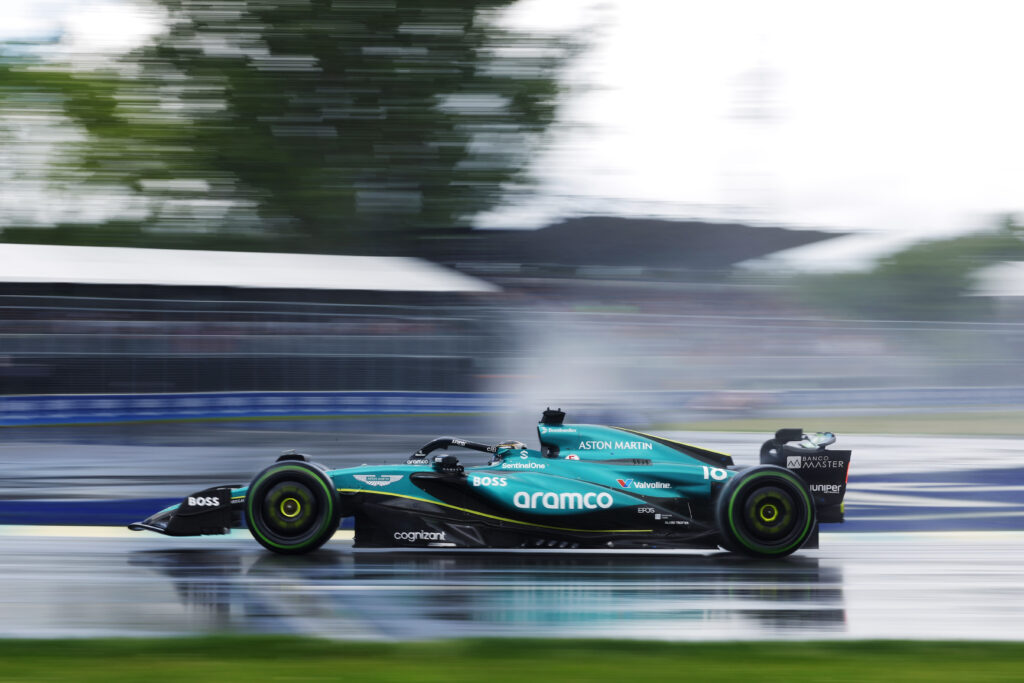
© Aston Martin F1
Real-World Impact: The innovations born in the high-pressure environment of motorsport often find their way into everyday vehicles, benefiting millions of drivers worldwide. The rigorous testing and development cycles in motorsport accelerate the adoption of new technologies in the consumer market. This technology transfer means that the sustainability efforts in motorsport have a direct and positive impact on reducing global emissions from road transport.
In conclusion, motorsport is uniquely positioned to lead the charge in sustainability within the sporting world. Its commitment to innovation, the transfer of technology to consumer vehicles, and proactive environmental initiatives make it a powerful platform for companies to showcase their sustainability credentials. By highlighting the broader impact of their sustainability efforts in motorsport, companies can effectively communicate their commitment to environmental stewardship, not just within the sport but in the real world as well. In this way, motorsport is not only a thrilling spectacle but also a catalyst for sustainable change, proving that speed and sustainability can go hand in hand.
This is original editorial content from Drive Sports Marketing, an agency specialising in Formula 1 sponsorship, Formula E sponsorship, MotoGP sponsorship, and WEC sponsorship.
In a previous article, we discussed how team culture influences sponsorship acquisition, but in Formula 1, where technology reigns supreme, the importance of drivers' personalities often gets overshadowed. Yet, beyond the track, drivers' engaging personas play a pivotal role in shaping a team's success. While technology is crucial, drivers' charisma captivates audiences and enhances team profiles. In this article, we will explore how F1 drivers' personalities boost sponsorships, fan interest and team image.
Building a Strong Fanbase: In the sport ecosystem, fan engagement is paramount. A driver's personality can serve as a powerful magnet, drawing in supporters from around the globe. Whether it's through their charisma, relatability, or sheer determination, fans often develop a deep emotional connection with their favourite drivers.
Take Lewis Hamilton, for example. With his dynamic personality, Hamilton has transcended the realm of motorsport to become a global icon. His social media presence, fashion collaborations, and advocacy work have endeared him to millions of fans worldwide, many of whom may not have been initially drawn to Formula 1. By cultivating such a devoted fanbase, Hamilton not only boosts his personal brand but also enhances the visibility of his team, the Mercedes-AMG Petronas Formula One Team.
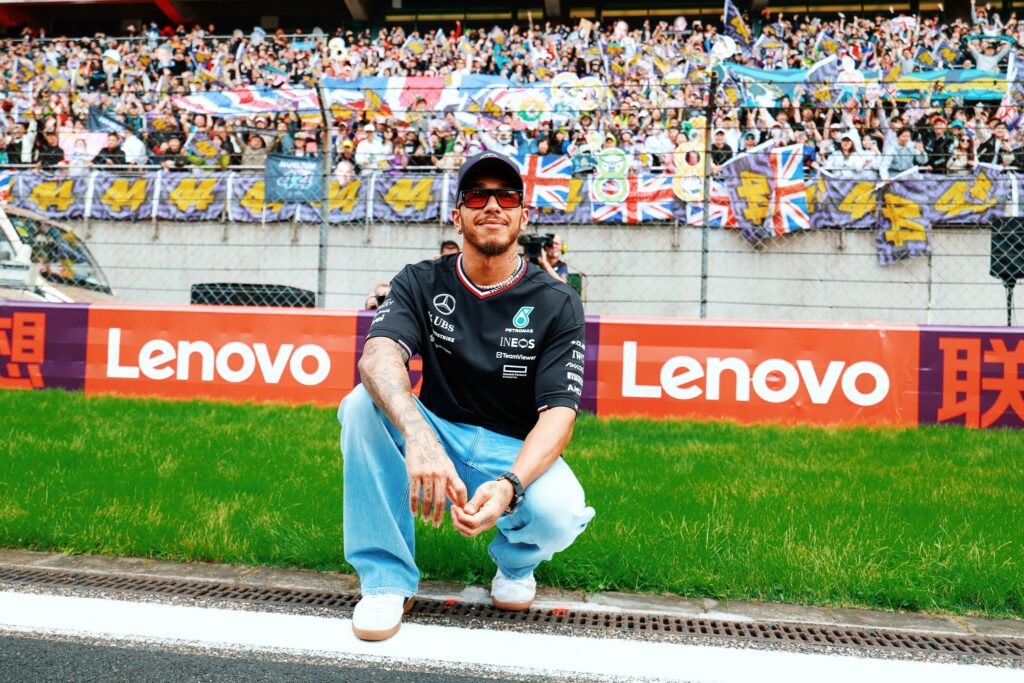
© Lewis Hamilton
Humanizing the Team: Being motorsport often associated with cutting-edge technology and corporate sponsorships, a driver's personality can inject much-needed humanity into the mix. By showcasing their quirks, passions, and vulnerabilities, drivers humanize their teams, making them more relatable to fans.
Daniel Ricciardo is a prime example of a driver who excels in this regard. Known for his infectious smile and exuberant personality, Ricciardo brings a sense of warmth and authenticity to his team.
Whether he's performing his trademark "shoey" celebration or engaging in playful banter with fellow drivers, Ricciardo's charm extends far beyond the confines of the racetrack, endearing him to fans and sponsors alike.

© Getty Images/Red Bull Content Pool
Boosting Sponsorships: In the ultra-competitive world of Formula 1, securing sponsorship contracts is essential to fund team operations and remain competitive on the starting grid. A driver's personality can be a decisive factor in attracting sponsors, as brands seek to align themselves with individuals who resonate with their target audience.
Max Verstappen, with his fearless driving style and outspoken demeanour, has emerged as a magnet for sponsors eager to associate themselves with his winning mentality. From global brands to niche sponsors, Verstappen's appeal extends across a wide spectrum, making him an attractive proposition for any team fortunate enough to have him behind the wheel.
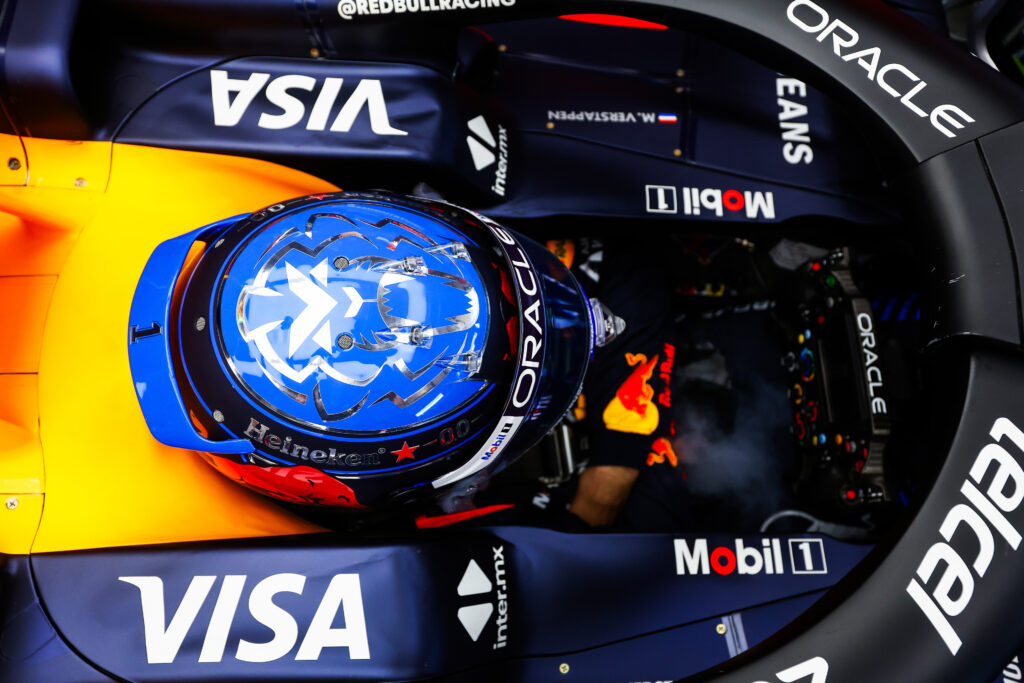
© Getty Images / Red Bull Content Pool
Conclusively, although technology and performance reign supreme, it's clear that personality plays a crucial role in shaping a team's success. From building a strong fanbase and humanizing the team to attracting sponsorship opportunities and enhancing team dynamics, an F1 driver's engaging personality can make all the difference, both on and off the track. As the sport continues to evolve, the value of charisma and relatability will remain ever-present, ensuring that the human element remains at the heart of Formula 1's enduring appeal.
This is original editorial content from Drive Sports Marketing, an agency specialising in Formula 1 sponsorship, Formula E sponsorship, MotoGP sponsorship, and WEC sponsorship.
In elite sports, the partnerships between brands and teams can be lucrative yet complex affairs. Choosing the right team to sponsor can significantly impact a brand's visibility, reputation, and bottom line. However, the decision to change or stick with a particular team requires careful consideration of various factors. In this article, we delve into the reasons why sponsors shift teams, along with the pros and cons of such a decision.
Enhanced Brand Alignment: One of the primary reasons for considering a change in team sponsorship is to better align the brand with a team that reflects its values, target audience, and marketing objectives. Switching to a team whose ethos resonates more closely with the brand can foster stronger brand-team synergy, resulting in more effective marketing campaigns and increased brand affinity among fans.
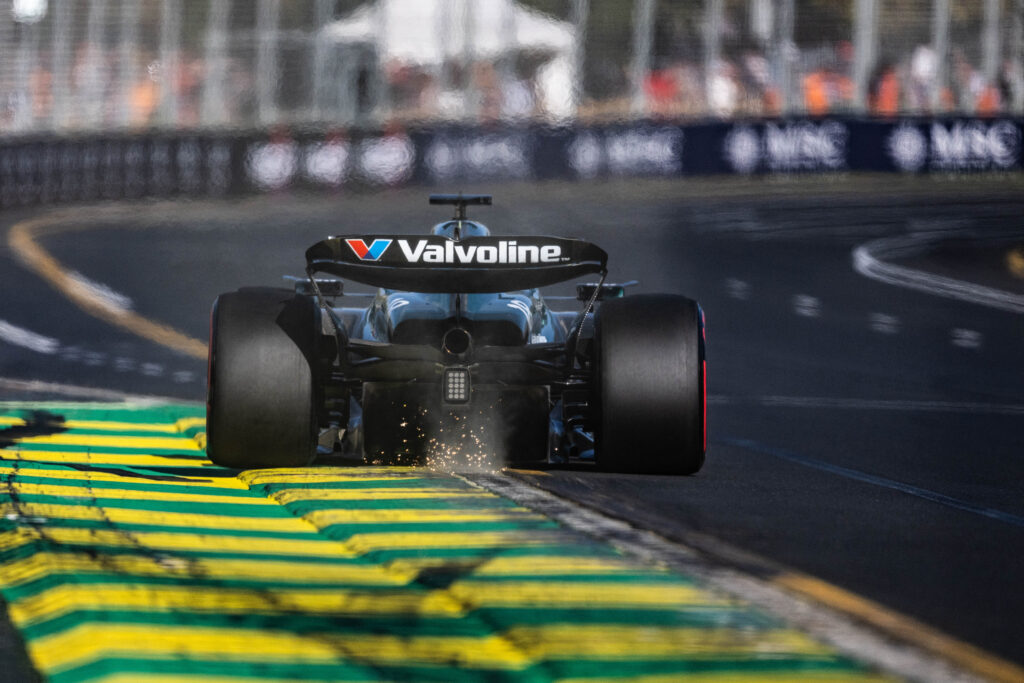
Maximizing Exposure Opportunities: Different teams have varying levels of visibility and influence within the sport. Sponsoring a team with a larger global fanbase or a more prominent position in the championship standings can provide brands with greater exposure opportunities. By aligning with a successful team, brands can leverage the team's success to enhance their brand image and reach a wider audience.
Innovation and Technology Showcase: Motorsport is synonymous with cutting-edge technology and innovation, making it an ideal platform for brands looking to showcase their technological prowess and commitment to advancement. Sponsoring a team known for pushing the boundaries of engineering and performance can enhance a brand's reputation as an industry leader and innovator.

Strategic Partnerships: Changing team sponsorship presents an opportunity for brands to forge new strategic partnerships that offer unique advantages. Collaborating with a different team may open doors to new B2B opportunities, as well as the chance to increase the brand's market share in new regions and with audiences in which that particular team is better positioned than the previous one.
Switching teams offers brands the chance to inject new life into their marketing strategies, providing fresh storytelling angles and increased flexibility to adapt to evolving trends. Aligning with a successful team can offer a competitive advantage and reinforce brand leadership.
However, there are challenges to consider, including the potential loss of established brand identity, backlash from fans of the previous team, and significant financial commitments. Before taking the plunge, brands must carefully weigh these pros and cons to ensure that the benefits outweigh the risks in the dynamic world of sports sponsorship.
This is original editorial content from Drive Sports Marketing, an agency specialising in Formula 1 sponsorship, Formula E sponsorship, MotoGP sponsorship, and WEC sponsorship.
In the realm of sports sponsorship, the collaboration between sponsors and sports entities has become an essential aspect, providing financial support and visibility for athletes, teams, and events. Notably, there is a growing emphasis on the union of ethical values and sports sponsorship.
One significant impact of ethical and moral values in sports sponsorship is on the reputation and brand image of sponsors. Companies invest substantial resources in cultivating a positive brand image, and aligning with sports entities that uphold integrity and fairness contributes to this effort. Conversely, association with those engaged in unethical practices can lead to enduring damage, highlighting the delicate balance sponsors must strike in their partnerships. The loyalty of sports fans, known for their passion, is another critical aspect affected by ethical considerations in sponsorship. Sponsors seek to forge a strong connection with these fans, and supporting ethically responsible athletes or teams serves as a catalyst for this relationship. On the flip side, unethical behavior can alienate fans, resulting in repercussions for both the sponsored property and the sponsor.
The loyalty of sports fans, known for their passion, is another critical aspect affected by ethical considerations in sponsorship. Sponsors seek to forge a strong connection with these fans, and supporting ethically responsible athletes or teams serves as a catalyst for this relationship. On the flip side, unethical behavior can alienate fans, resulting in repercussions for both the sponsored property and the sponsor.
Legal and regulatory compliance is an additional dimension in the importance of ethical values in sports sponsorship. Sponsors operate within a framework of obligations, and supporting sports entities adhering to ethical standards ensures compliance, preventing legal issues.
Furthermore, corporate social responsibility (CSR) initiatives tie into this, as sponsors aligning with sports properties that share their CSR goals contribute positively to the community. Navigating this intricate world of sports sponsorship involves strategic maneuvers when ethical lines are crossed. Contracts, with breach of conduct clauses, serve as ethical agreements defining the standards for athletes and teams. Termination of contracts becomes a swift response when deviations, such as doping scandals or match-fixing, occur, reinforcing the commitment to ethical standards. In fact, reputational risk management is an ongoing process for sponsors keen on safeguarding their brand image.
Navigating this intricate world of sports sponsorship involves strategic maneuvers when ethical lines are crossed. Contracts, with breach of conduct clauses, serve as ethical agreements defining the standards for athletes and teams. Termination of contracts becomes a swift response when deviations, such as doping scandals or match-fixing, occur, reinforcing the commitment to ethical standards. In fact, reputational risk management is an ongoing process for sponsors keen on safeguarding their brand image.
Today, in the age of social media, public backlash and consumer perception play a pivotal role, with sponsors strategically cutting ties to protect their brand from negative associations.
In conclusion, ethical values are not mere buzzwords but the bedrock upon which enduring success in sports sponsorship is built. Sponsors increasingly recognize the strategic necessity of committing to ethical and moral standards, understanding that it is not only a moral imperative but essential for sustained positive brand engagement. As the sports industry evolves, the emphasis on ethical considerations is poised to grow, shaping a landscape where integrity, fairness, and respect are paramount.
This is original editorial content from Drive Sports Marketing, an agency specialising in Formula 1 sponsorship, Formula E sponsorship, MotoGP sponsorship, and WEC sponsorship.
The news of Lewis Hamilton joining Scuderia Ferrari in 2025 is making headlines; however, many are still wondering if this move makes complete sense. Setting aside the sporting aspect, as time will tell and Sir Lewis' performance will likely be defined by the quality of the machinery provided, it's equally important to focus on the commercial and marketing rationale behind this decision. Imagining F1 drivers as marketing powerhouses is crucial in the context of the sport's increasing commercialization.
In recent years, Formula 1 has emerged as one of the most commercialized sports globally, with teams and drivers seeking ways to capitalize on franchise growth. And even Ferrari aims to explore these avenues.
 Among all Formula 1 drivers, Lewis Hamilton stands out as the first, and perhaps still the only one, to become an icon beyond the racing world. He has participated in fashion shows, ventured into music, and associated himself with Hollywood's elite. When Tommy Hilfiger became a partner of the Mercedes F1 team, there was already a collaboration with Lewis Hamilton. For many other lifestyle partners of the team, the access and affiliation with the seven-time world champion was crucial.
Among all Formula 1 drivers, Lewis Hamilton stands out as the first, and perhaps still the only one, to become an icon beyond the racing world. He has participated in fashion shows, ventured into music, and associated himself with Hollywood's elite. When Tommy Hilfiger became a partner of the Mercedes F1 team, there was already a collaboration with Lewis Hamilton. For many other lifestyle partners of the team, the access and affiliation with the seven-time world champion was crucial.
Hamilton, with his distinctive style and outspoken advocacy for social and environmental issues, has successfully crafted a brand extending beyond the racetrack. This personal brand becomes an asset for the team, drawing attention and interest not only from motorsport enthusiasts but also from a diverse audience.
So, what does this move mean for both Hamilton and Ferrari?
Hamilton, approaching 40 and likely to retire in the next 2-3 years, is understandably considering his post-racing career. Ferrari offers more than Mercedes in this regard. Being a Ferrari ambassador will position him as the representative of the world's most acclaimed brand, opening the major doors in show business and propelling his career beyond the racing world.
On the other hand, Ferrari is expanding its target audience beyond the traditional base, exemplified by the production of its first SUV, the Ferrari Purosangue, following a strategy initially implemented successfully by Lamborghini with the Urus. Ferrari is also striving to grow as a lifestyle and fashion brand. This is evident in the launch of its own clothing and accessory line through its Brand Diversification division.
 Considering these aspects, it's evident that Lewis Hamilton can help the Prancing Horse extend its reach beyond racing and car enthusiasts, engaging with a more diverse and lifestyle-oriented audience.
Considering these aspects, it's evident that Lewis Hamilton can help the Prancing Horse extend its reach beyond racing and car enthusiasts, engaging with a more diverse and lifestyle-oriented audience.
In conclusion, Formula 1 drivers, especially exemplified by figures like Lewis Hamilton, have become instrumental in their teams' marketing strategies. Through personal branding, social media engagement, charitable initiatives, on-track success, and global appeal, drivers serve as powerful ambassadors for sponsors. The symbiotic relationship between drivers and teams, coupled with the global reach of Formula 1, creates a compelling narrative that extends beyond the race circuit, making the sport a thriving marketing ecosystem where drivers play a pivotal role.
This is original editorial content from Drive Sports Marketing, an agency specialising in Formula 1 sponsorship, Formula E sponsorship, MotoGP sponsorship, and WEC sponsorship.
We've recently been tasked by a brand to evaluate whether title sponsorships really deliver added value compared to more standard sponsorships and the results have given some clear indications. Do title sponsorships work? Let's look into that.
The main difference between a title sponsorship and a standard sponsorship is naming rights that are included in the first one and thanks to that the sponsor can put his name as an integral part of the team's name. These rights are the ones that are supposed to generate that extra value, however, this is not as straightforward as it might seem. Let's look into the conditions that can make a title sponsorship successful or not.
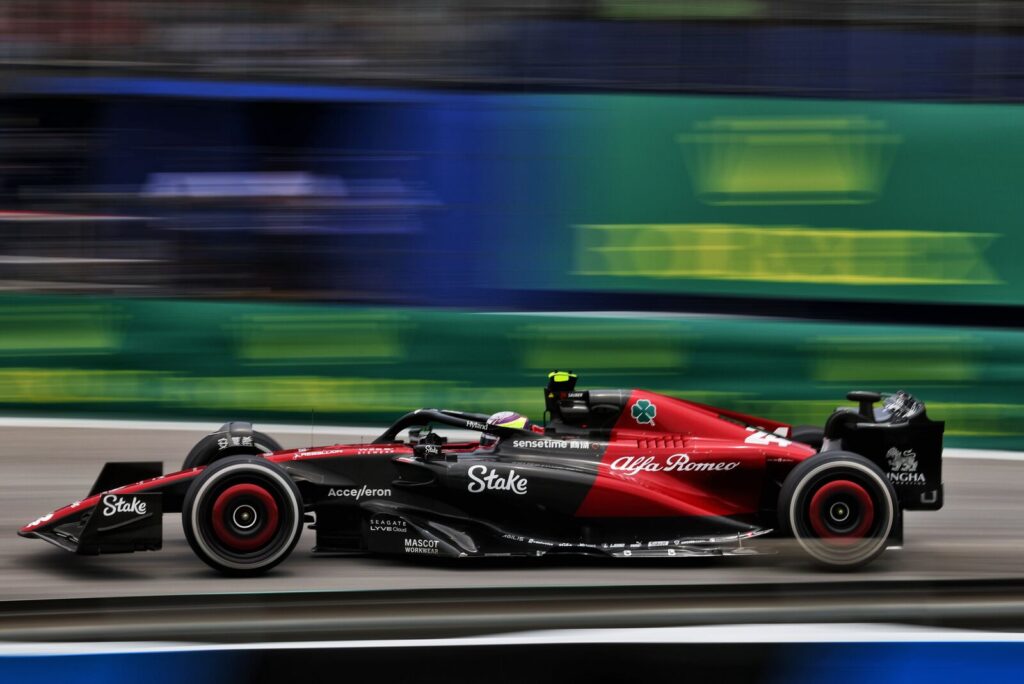
Be the Only Title Sponsorship: Formula 1 has become a highly sought-after sport, with several teams having more than one brand as a title sponsor. As a brand, it is important to ensure that you are the only title sponsor, as the success of a title sponsorship lies in being the sole title sponsor, completely replacing the previous naming.
Less brand equity, the better: Based on our analysis, we found that a title sponsorship tends to be more successful if the team's original name doesn't have a strong brand equity. This is because it's easier for fans to associate and identify the team with your brand's name when there isn't a strong attachment to the old name.
Think long-term: Our data suggests that it may take up to 24 months for a new team name to gain widespread recognition and acceptance among fans. This is influenced by several factors, including the team's history, fan sentiment, and media coverage. Therefore, to achieve the desired outcome, a title sponsorship should run on multi-year agreements.
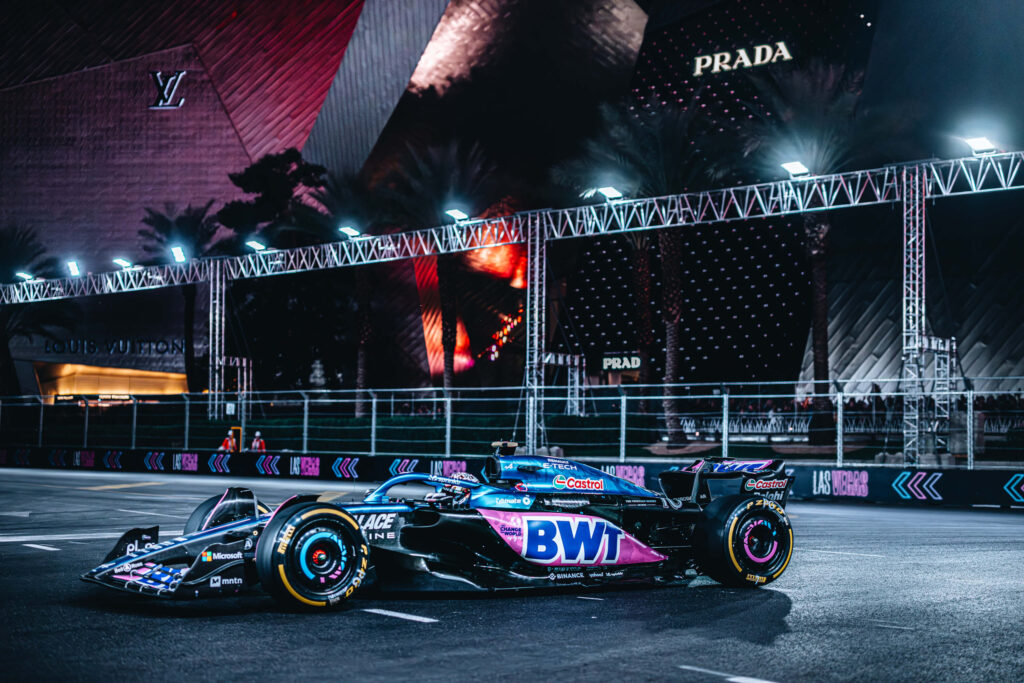
There are also additional factors that contribute to the success of a title sponsorship, which are also shared with more traditional sponsorship agreements. These include genuine integration into the team, authentic storytelling, brand alignment with the team's personality, access to the right assets, and a well-structured activation strategy.
In conclusion, if you are a brand looking to invest in a title sponsorship, it is crucial to prioritize the first three points as they should be the starting point for any discussion.
This is original editorial content from Drive Sports Marketing, an agency specialising in Formula 1 sponsorship, Formula E sponsorship, MotoGP sponsorship, and WEC sponsorship.